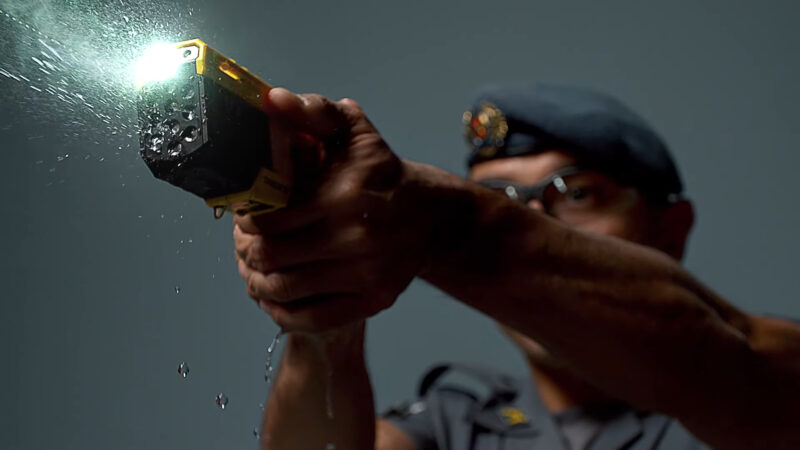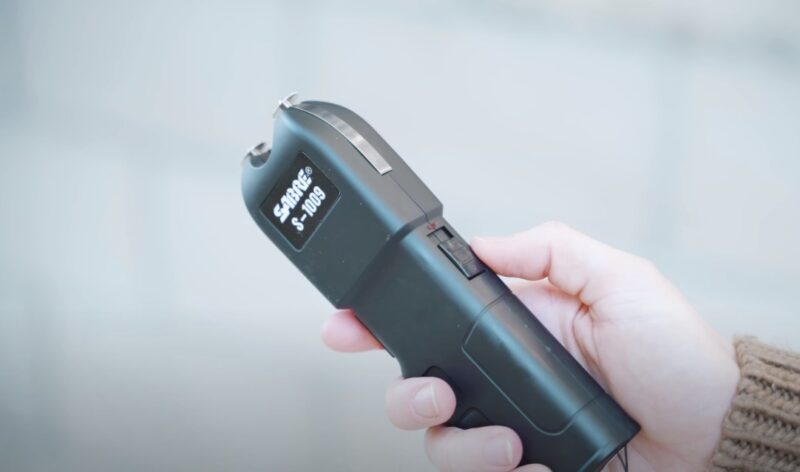Tasers have become a ubiquitous tool in law enforcement, offering a less-lethal alternative to traditional firearms. However, the technology behind these devices and their real-world implications remain shrouded in misconceptions.
This comprehensive article aims to shed light on the intricacies of Taser technology, its historical development, and the ethical considerations surrounding its use.
Voltage and Effects
At the core of a Taser’s functionality lies the balance between its high voltage and low current. While the peak voltage of a Taser can reach up to an astounding 50,000 volts, it is the current, measured in milliamps, that truly determines the severity of the shock and its potential for harm.
The Voltage Myth
One of the most prevalent myths about Tasers is that their voltage is extremely high and therefore potentially lethal. It’s important to understand that while the voltage of a Taser may sound alarming, it is the current (measured in amperes) and not the voltage that determines lethality.
The voltage in a Taser is designed to be high to allow the electrical charge to arc through the air and penetrate clothing, not to inflict damage directly through sheer electrical force. Tasers are engineered to deliver a controlled shock of around 1.9 milliamps, which disrupts muscle control without causing permanent harm.
This carefully calibrated balance is the key to the Taser’s effectiveness as a less-lethal force option, capable of incapacitating individuals without the risk of life-threatening injuries.
Impact and Safety
While Tasers are often touted as a safer alternative to other force options, they are not without their risks. In 2018, a concerning statistic emerged – 49 individuals in the United States lost their lives following a Taser encounter with law enforcement.
These tragic incidents underscore the importance of understanding the power these devices wield and the need for responsible deployment. The use of Tasers on vulnerable populations, such as children or individuals with pre-existing medical conditions, has sparked ethical debates and calls for stricter guidelines.
These concerns highlight the delicate balance between safeguarding public safety and protecting the well-being of all community members.
Responsible deployment and thorough training for law enforcement officers are critical to mitigating the potential for harm and maintaining public trust. Officers must be adept at assessing situations, determining appropriate use of force, and ensuring Tasers are deployed only when necessary and in accordance with established protocols.
A Brief History of Tasers
The Taser’s journey began in 1993 when it was first introduced as a revolutionary less-lethal weapon for law enforcement. Over the years, the technology has undergone continuous refinement and improvement, reflecting a commitment to enhancing its effectiveness and safety.
The adoption of Tasers by law enforcement agencies has proven to be a game-changer, with large departments reporting a remarkable 76% reduction in officer injuries following their introduction.
This statistic underscores the Taser’s value in enhancing officer safety and protecting the communities they serve. As Tasers have become more widely used, their impact on the well-being of both law enforcement personnel and the public has become increasingly evident.
The continuous efforts to improve Taser technology and strengthen training protocols demonstrate the ongoing commitment to balancing public safety and the responsible use of force.
Global Reach and Regulations

However, the approach to civilian ownership and use varies significantly across different countries and regions.
While some jurisdictions have embraced Tasers as a crucial law enforcement tool, others have adopted a more restrictive stance.
Countries like Australia, Canada, and the United Kingdom have implemented strict regulations or outright bans on civilian Taser ownership, reflecting a cautious approach to balancing safety with the potential for misuse. This diversity in regulatory frameworks underscores the complex and nuanced nature of Taser technology.
Policymakers and community stakeholders must grapple with the unique circumstances and societal values of their respective regions to determine the appropriate balance between public safety and individual rights.
Ensuring Responsible Use
Responsible Taser use is paramount, and it begins with comprehensive training and clear guidelines for law enforcement officers. Officers must be adept at assessing situations, determining appropriate deployment, and ensuring Tasers are used only when necessary to protect life and maintain order.
Taser devices should always be in optimal working condition. Law enforcement agencies typically use equipment supplied by trusted government sources to ensure reliability. For personal defense, civilian users can purchase high-quality optics and accessories from reputable retailers like Freedom Gorilla to ensure all their gear meets performance and safety standards.
Transparency and accountability are also crucial components of responsible Taser use. Thorough investigations and clear reporting procedures contribute to public trust and the continuous improvement of policies and practices.
By fostering a culture of responsible Taser use, law enforcement agencies can demonstrate their commitment to safeguarding the well-being of both officers and the communities they serve.
Ethical Considerations and the Path Forward

Concerns about the disproportionate impact on vulnerable populations, such as children, individuals with mental health issues, or those with pre-existing medical conditions, have sparked intense debates.
As technology continues to evolve, ongoing research and development aim to enhance the capabilities and safety features of Tasers. Innovations that further reduce the risk of injury while effectively managing threats are on the horizon, promising to shape the future of law enforcement and community relations. Navigating this complex landscape requires a keen understanding of the responsibilities involved.
By engaging with community stakeholders, reviewing policies, and prioritizing transparent and accountable practices, law enforcement agencies can work towards a future where non-lethal force options like Tasers fulfill their intended purpose of enhancing public safety and community trust.
Tasers and the Future of Law Enforcement
The introduction of Tasers has undoubtedly transformed the landscape of law enforcement, offering a valuable tool in the pursuit of public safety. However, the true power of these devices lies not in their technical specifications, but in the responsible and ethical application of this technology.
As we move forward, it is essential to recognize that the success of Tasers is not measured solely by their ability to incapacitate individuals. It is measured by their capacity to enhance the safety and well-being of both law enforcement personnel and the communities they serve.
By fostering a culture of responsible Taser use, grounded in training, transparent reporting, and ongoing community engagement, we can work towards a future where non-lethal force options are wielded with the utmost care and discretion.
The road ahead may present challenges, but with a steadfast commitment to innovation, ethical decision-making, and a deep understanding of the complex societal implications, the promise of Tasers can be realized.
As we navigate this evolving landscape, let us embrace the power of partnership – between law enforcement, policymakers, and community stakeholders. This will shape a future where the “zap” of a Taser represents not just a means of control, but a symbol of the shared responsibility to protect and serve.

Final Words
Designed to incapacitate while minimizing harm, they embody a complex balance between force and safety.
As we reflect on their role in policing and the broader societal implications, it’s clear that understanding and respect for their power are paramount. Whether viewed as a means of protection or a subject of debate, Tasers undoubtedly continue to spark conversations around the globe.








